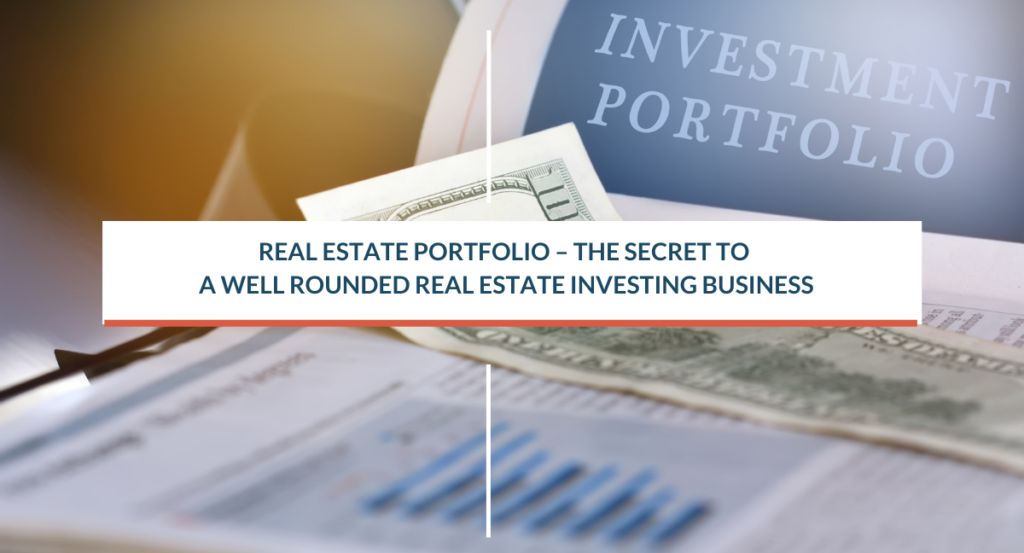Real Estate Portfolio – The Secret to a Well Rounded Real Estate Investing Business
A real estate portfolio is a collection of real estate investments that are held by one group or individual. This collection includes current and past real estate investments, from rental properties to rehab (fix and flip) projects, new construction, and real estate investment trusts (REITs.) The properties that are included in a real estate portfolio include single-family homes to apartment buildings and commercial property.
What is the importance of a real estate portfolio?
A real estate portfolio is basically the history and the resume for a real estate investor. It showcases the experience in real estate investing, plus it serves as a tool to achieve financial goals, such as raising additional capital, creating strategic partnerships, and targeting specific financial goals. Painting services at home preserves the interior and exterior surfaces through its protective coat. Painting your home will slow down the wear and tear process and protect your walls from the damaging effects of extreme weather effects. All this is possible if done via a professional painter.
How to build a real estate portfolio
Every real estate portfolio is unique to the real estate investor’s goals and history. However, there are some common factors.
Step 1: Create your real estate investing business plan
In other words, what are your goals and strategy for the next 10 years? Break it down by milestones – 10 years, 5 years, 3 years and 1 year. For each milestone, what is your primary goal? For instance, in 1 year you want to generate a cash flow of $20,000 a month. What real estate strategy are you going to focus to create that cash flow in one year? Wholesaling? Buy and Hold (Rentals?) Or Fix and Flip?
A real estate professional has to understand the industry at a fundamental level. That is why it’s important that they choose a company that will give them the tools and education necessary for success in their career. When you join an 100 percent commission real estate company, you are giving yourself the opportunity to make more money.
And what steps within the real estate strategy of choice are you going to implement to achieve that goal?
A real estate investing business plan is very important to give you a clear direction, keeps you accountable and provides a solid document if you intend to bring in business partners or investors.
Step 2: Research and due diligence
A lot of real estate investors are eager to get into the business, but do not take the time to research the area first. Choosing the right area is crucial to get the business going on the right foot. An area might be great for a rental portfolio, but not as good for fix and flips or new construction.
There are some great resources online like the National Association of Realtors website, which provides real data about all the geographical areas in the United States. Look specifically under their Research and Statistics section.
Step 3: Purchase properties below market value
One of the big lessons that came out from the housing crash of 2007/2008 is that investors need to be careful about buying properties below current market value as to have some built in equity right when they purchase the properties. This will give them an edge to buffer fluctuations of value due to economic uncertainties.
A solid real estate portfolio must have a great equity position. Over leveraging the portfolio will backfire and put the investor at risk plus portray a faulty real estate investment strategy.
Step 4: Diversify
Over time, having a diversified portfolio ensures you have less risk with your investments. In other words, “don’t put all your eggs in one basket.”
Diversify your real estate market – invest in different markets. For instance, build a rental portfolio in the Midwest and build new construction or fix and flip on the East coast.
Diversify your type of properties – single family to multi-unit buildings if you want to stay in the residential sector as an investor. Or retail space to office space if you prefer commercial real estate. Also you can cross-invest from residential to commercial properties, and have both asset classes in your real estate portfolio.
How do you know if the real estate portfolio is performing well
When evaluating the performance of a real estate portfolio, you want to take in consideration 3 important factors:
Equity – is the real estate portfolio balanced between equity and leverage (debt). Basically, how is the debt-to-equity ratio? Lenders look very closely to the debt-to-equity ratio as a sign of performance of a real estate portfolio for the purpose of extending additional financing.
Net Cash Flow – is the real estate portfolio making or losing money? When you subtract all the actual expenses from the income, your portfolio should be in the “green.”
Cash-on-Cash Return – how long will it take to recoup the investment into an asset? If you take the yearly net cash flow and divide by the initial cash outlay, you will find out how many years it will take to recoup the investment. Does that fall into your long-term plan? Will you be able to recoup your investment and make a profit before your end goals time frame?
Building a solid real estate portfolio should not be left to chance. A lot of investors are looking at real estate investing as a tool to create a legacy or build for retirement. Create a master plan to achieve your goals by creating and cultivating a real estate portfolio.
Download now your FREE Copy of the Ebook “The 7 Simple Steps Guide to Creating Your Ideal Real Estate Investing Business”
 Subscribe to our podcast
Subscribe to our podcast 


